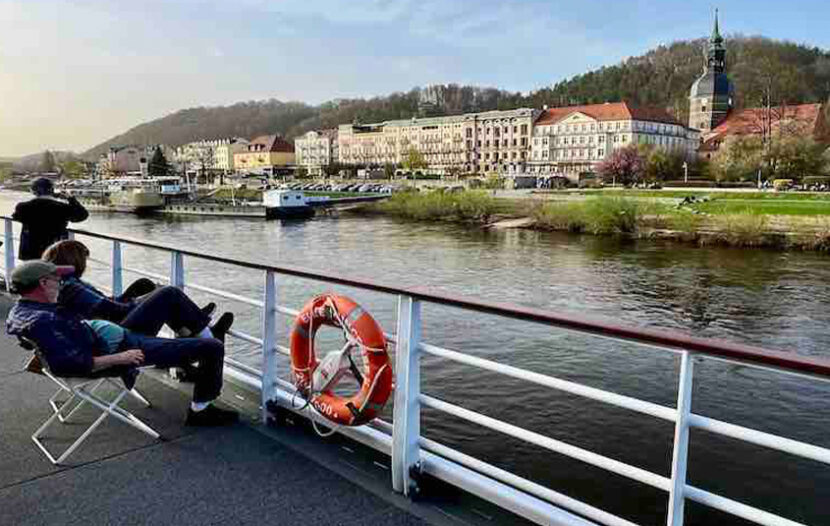MONTREAL — Last March, I sailed on the Moldau and Elbe rivers aboard the Elbe Princesse II, a river cruise ship that took me from Prague to Berlin. It was an exciting journey for anyone who enjoys art, culture, fine dining, history and unique natural scenery, such as the ancient extinct volcanoes of the Czech Republic or the sandstone cliffs of the Elbe.
Point by point, here are the essential elements that make this cruise a sure thing and a fantastic way to traverse Central Europe, visiting splendid sites and cities while relaxing and dining well.
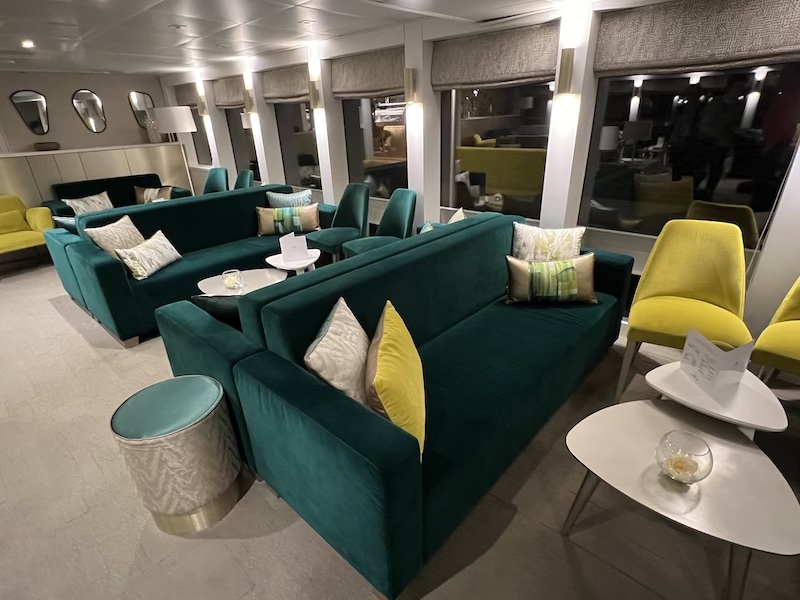
The Onboard Setting
The Elbe Princesse II features pleasant public areas that are open and airy, and includes a well-windowed dining room (lower deck) and a lounge with even larger windows, along with comfortable armchairs and sofas. Nearly the entire roof of the ship is a vast terrace, the Sun Deck, which is partly covered and where you can lie on loungers and watch the scenery pass by slowly.
Everything is included on board (meals, drinks, Wi-Fi, etc.), except for excursions, which can be purchased à la carte or as a package.
The Cabins
The cabins are modest in size but those on the upper deck feature large, sliding, patio-style windows (almost the size of the cabin wall) that open to the outside. You can stretch out in your bed to admire the landscape or deploy the retractable TV at the touch of a button.

A complete bathroom (with a very efficient shower), a small desk and a wardrobe with a safe complete the setup.
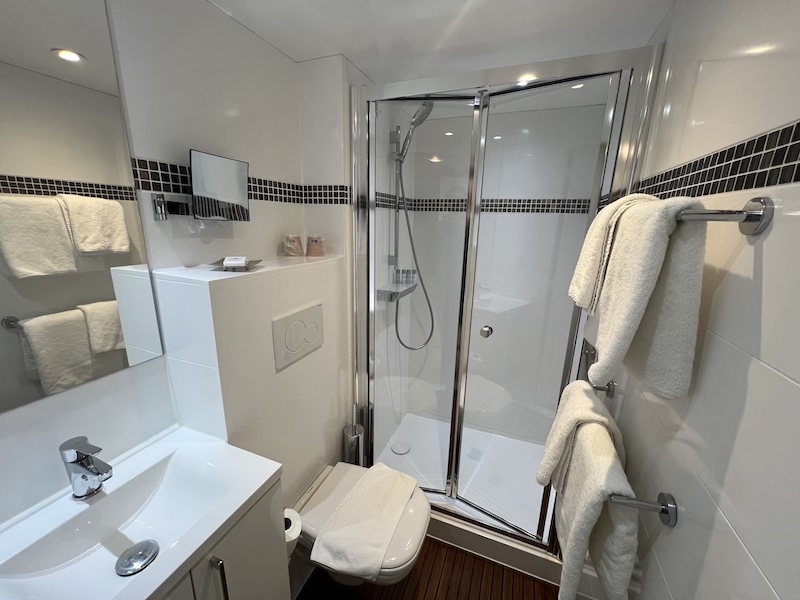
Dining
The dining is always very good, even excellent. The fixed menu (unless a special request is made) changes daily, and the chef takes pride in varying the dishes while staying within the realm of French gastronomy, with or without a local touch. You are never disappointed: cod fillet with white butter sauce, venison steak with lingonberries, quails in red wine, flambéed Norwegian omelet served with flair — all complemented by unlimited white or red wine (with a wider selection available for an additional fee).
In the morning, each table is provided with a basket of (very good) pastries, while the buffet offers traditional breakfast items (eggs, cheeses, cold cuts, cereals, yogurts, etc.). You can also request à la carte items (omelets, poached eggs, etc.).
Outside of the plentiful meals, there are only light snacks available. However, the bar is open and you can request refreshments, alcoholic or non-alcoholic, at any time.
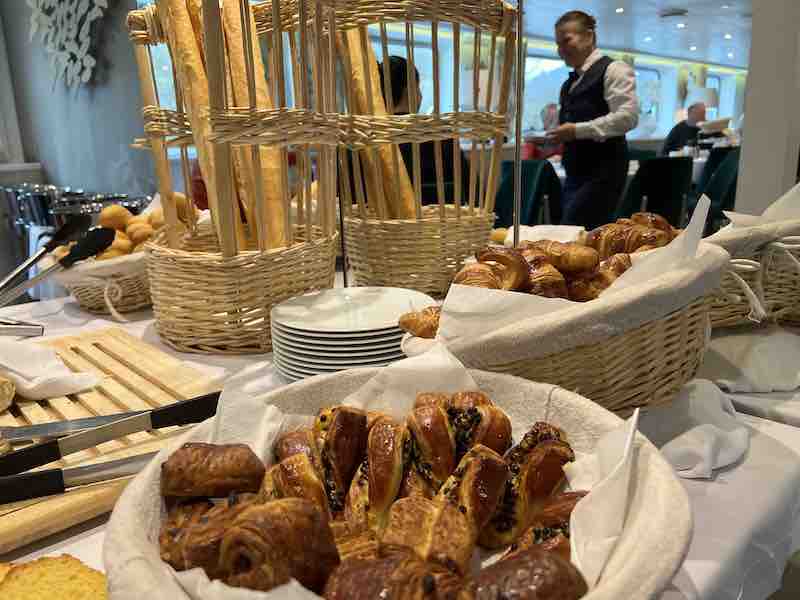
The Service
This is one of the great strengths of this ship and, according to several loyal passengers, of CroisiEurope. The staff is extremely attentive and always smiling, especially at tables where it is particularly warm and efficient. The staff is proficient in both French and English.
A telling anecdote: upon learning that I was a fan of one of the servers, Tokaji, who was Hungarian, went to his cabin to fetch a bottle of delicious Hungarian wine to offer me a glass. Get the idea?
Generally, all the staff (housekeepers and sailors included) are friendly and very nice to the passengers.

The Maintenance
The cleanliness of the Elbe Princesse II is impeccable, inside and out. The large windows are always spotless and regularly maintained, and even the ship’s sides are cleaned during lock passages, demonstrating the high level of care given to the ship’s condition.
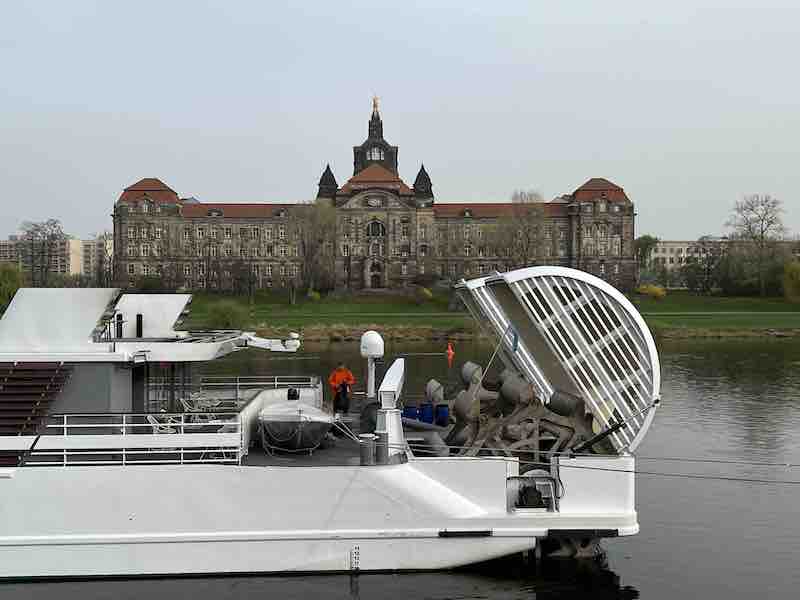
The Ports of Call
All the ports of call are very interesting, even impressive, and there is always something exciting to discover, see and learn.
Good to know: Although several guided tours are offered on board for Prague and Berlin, it is better to plan a few additional days, before and after the cruise, as there is much to see and do in these two cities.
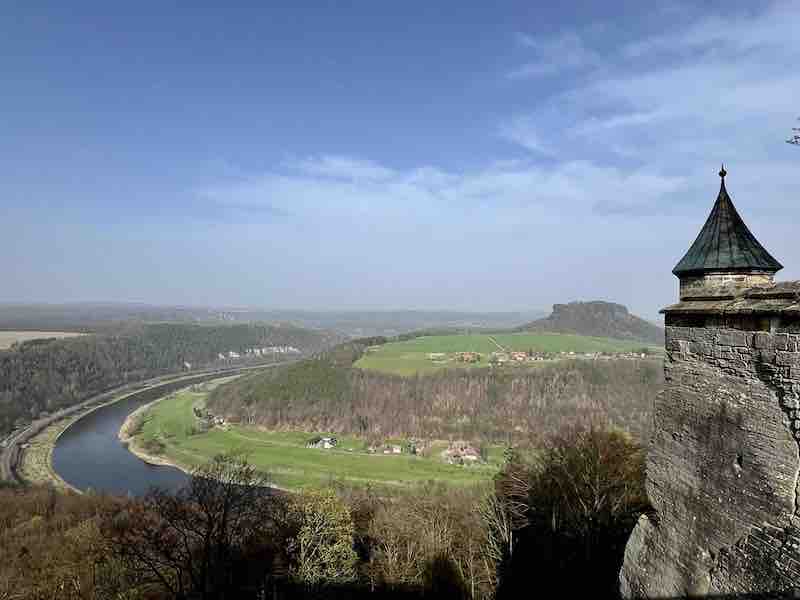
The Guided Tours
At each port of call, guided excursions are offered, in French and English whenever there are English-speaking passengers on board. In some cases, cruisers are free to explore the destination on their own (e.g., Prague, Berlin, Meissen, Bad Schandau, and Dresden). But sometimes there is no choice but to join the excursion, as the destination visited is located between two ports of call (ie. Wittenberg, where the ship continues its route while you visit) or is too far from the port (ie. Königstein).
In Dresden, the guided coach tour takes a long detour around the city, so it is better to go on your own if you wish to focus on the old town.
In any case, it is better to purchase the package that includes all excursions upfront: at the price of individual excursions, you quickly get your money’s worth. Otherwise, the total cost becomes higher after a few excursions, and there may be no more available spots.
Finally, depending on the week you take the cruise, some excursions may be added or removed for various reasons (for example, the former concentration camp at Terezin in the Czech Republic).

Life Onboard While Sailing
Just as you see private backyards when traveling by train, you do the same on a river cruise. You watch the scenery pass by slowly, get a glimpse into people’s lives, see farmers at work, and discover the behind-the-scenes of the cities you pass through.
Each day, you can lounge on a Sun Deck chair or relax in your cabin bed while watching the images of the shore pass by: the towering spires, deserted hamlets, a farmer fishing, a flock of herons, a cyclist overtaking us on the beautiful Elbe bike paths. Even with the wind at its back, the paddle wheels of the Elbe Princesse II never manage to propel it faster than 18 km/hr.
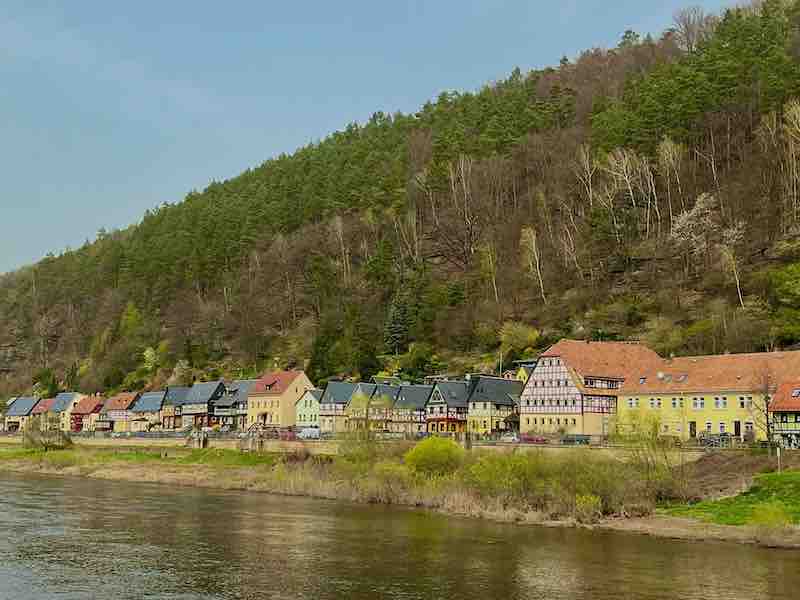
Between all the stops, life continues on board. Some knit, others chat, some dive into a novel or their travel guide while waiting for the next call from Erika, the vibrant and multilingual cruise director. She invites passengers to rush to the windows or the Sun Deck as the harp-shaped bridge of Ústí nad Labem, one of the many locks passed, or the charming town of Litoměřice approaches, where you can see the surprising extinct volcanoes of the Czech Republic in the distance.
Onboard Entertainment
Entertainment ranges from presentations on Czech beer (with tasting) to a French-style soirée with dancing and berets, as well as an excellent performance by a Czech trio presenting traditional folk music, including a cimbalom player (a type of ancient piano-xylophone). In any case, you are free to go to the Sun Deck or your cabin if you are not interested.
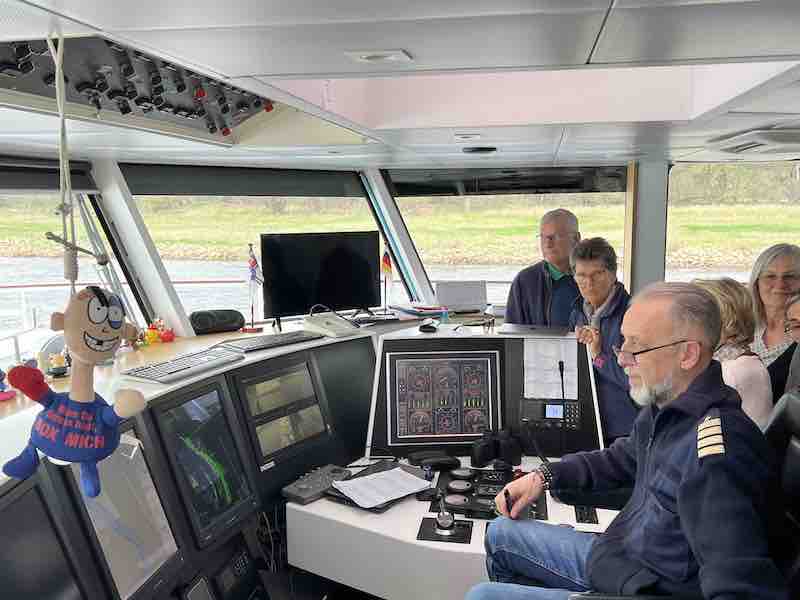
The Passengers
During our stay, the vast majority of the 89 cruisers were Francophone (French, Belgians, Swiss, and one Québécois – yours truly), and eight passengers (Americans) were Anglophone. In the lounge or at the table, conviviality is encouraged but not required: you can easily request a separate table if you’re not in the mood for conversation, or ask to join an English-speaking group.
Also during our stay, the average age of passengers was around 70, but there were some in their fifties plus a family with two teenagers. Almost everyone was in good physical condition, and the group’s pace was never slowed during excursions.
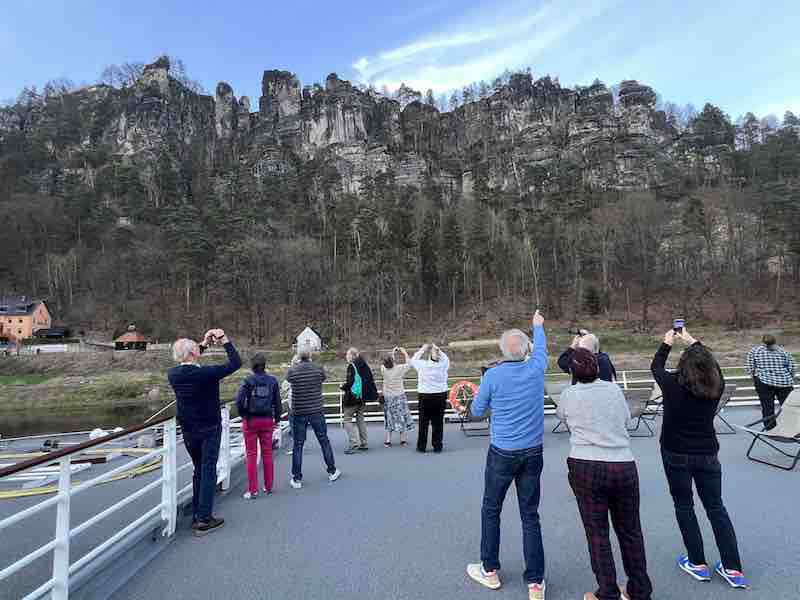
A Wealth of Cruises to Explore
Finally, once you get hooked, there is no shortage of options for a repeat experience: CroisiEurope offers a multitude of river (and also sea) cruises in Europe as well as in Asia and the Middle East.
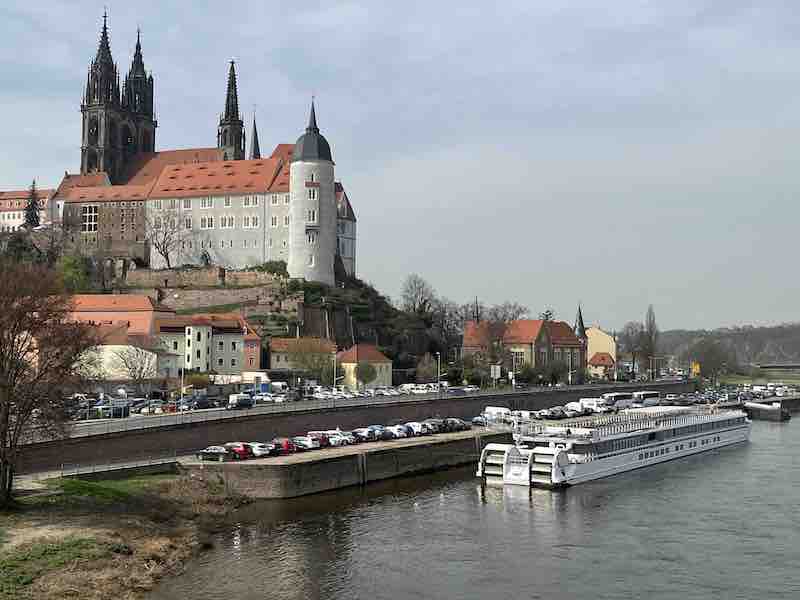
For more information go to www.croisieurope.travel/en.
